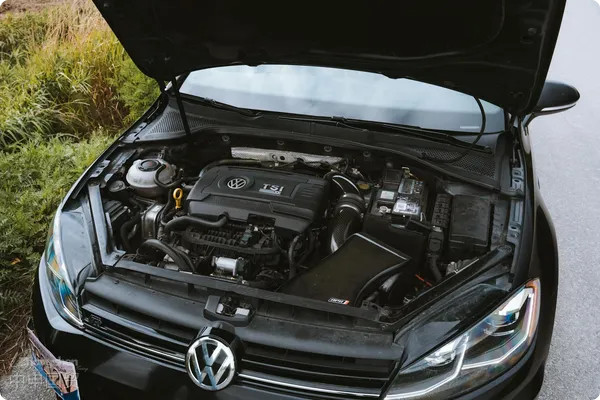- Shanghai Zhongshen International Trade Co., Ltd. - Two decades of trade agency expertise.
- Service Hotline: 139 1787 2118

As practitioners with 20 years offoreign tradeservice expert with 20 years of industry experience, this article will systematically analyze the core points of clothingExport RepresentationAs a customer service manager with extensive experience, I deeply understandAutomotive partsThe tariff rates involved in imports are a core concern for enterprises in supply chain cost calculations and compliant customs clearance. This article will systematically analyze the calculation logic, preferential policies, and key practical considerations for automotive parts import tariffs, incorporating the latest Chinese customs policies (2023), to provide professional reference for businesses.
Contents
ToggleI. Basic Composition of Tariff Rates for Auto Parts
1. Types of tariff rates
- Most - Favored - Nation (MFN) Tariff Rate: Applicable to WTO member states (default tariff rate)
- Agreement tariff rate: Countries with free trade agreements (such as ASEAN, RCEP member states)
- Ordinary tax rate: Countries without diplomatic relations or agreements (approximately 20%-40%)
- Provisional tariff rate: Temporarily preferential tariff rates subject to annual dynamic adjustment
2. Value-Added Tax and Consumption Tax
- Value - added Tax: Unified 13% (2023 standard)
- Consumption Tax: Only applicable to specific categories (such as those with a displacement >250ml)Motorcycle AccessoriesTrade dispute settlement mechanisms
II. Classification of Automotive Parts and Corresponding Tax Rates (2023)
| HS code range | Parts Category | MFN tariff rate | Example of Agreement Tariff Rates | Provisional tariff rate |
|---|---|---|---|---|
| 8708.30 | Brake System | 10% | Chile 0%, Australia 5% | 6% |
| 8708.50 | Drive axle and differential | 10% | The average RCEP member country is 6.5%. | 7% |
| 8708.94 | Steering system | 10% | New Zealand 4%, Pakistan 7% | 5% |
| 8483.10 | Transmission | 8% | Switzerland 3.2%, Costa Rica 6% | 5% |
Note: The specific tax rate needs to be determined comprehensively based on the material of the goods, purpose (after-sales/production assembly), and country of origin.
III. Tariff Calculation Logic and Case Studies
1. Formula for calculating the comprehensive tax rate
Composite tax rate = Customs duty + VAT + (Consumption tax)
VAT = (CIF price + Customs duty) × 13%
2. Practical Cases
Case 1: German imported engine (CIF price: 100,000 yuan)
- Most-favored-nation tariff 10% → Tariff = 10,000 yuan
- Value-added tax = (100,000 + 10,000) × 13% = 14,300.
- Total tax and fees = 10,000 + 14,300 = 24,300 (comprehensive tax rate 24.3%).
Case 2: Thailand imported gearbox (RCEP agreement tariff rate 5%)
- Duty = 100,000 × 5% = 5,000
- Value-added tax = (100,000 + 5,000) × 13% = 13,650.
- Total tax savings: 15,650 (35% savings compared to the MFN tariff rate).
IV. Application of Key Preferential Policies
1. Free Trade Agreement tariff reduction strategy
- RCEP: Cumulative regional value content ≥40% is eligible for preferential treatment.
- China-Europe Railway Express: Some inland ports offer subsidies for additional transportation fees.
- AEO-certified enterprises: Enjoy the benefits of consolidated taxation and relaxed guarantee limits.
2. Conditions for the application of provisional tariff rates
- In 2023, 23 new provisional tariff rates have been added for automotive parts (such asNew energyThe proportion of motors used in automobiles has dropped to 3%.
- The "Declaration for Application of Provisional Import Tariff Rates" must be submitted.
V. Key Points of Customs Clearance Practical Operations
1. The Three Principles of Compliance Declaration
- Accurate Classification: Refer to the "import and exportConfirm the 10-digit HS code based on the "Explanatory Notes to the Harmonized System Commodity and Tariff Nomenclature."
- Standardized Declaration: Specify the applicable vehicle models for the accessories (e.g., only applicable to BMW G38 chassis models).
- It is recommended to verify through the following methods:Certificate: Certificates such as FORM E and RCEP must be consistent with the shipping mark information.
2. Document Preparation Checklist
- Compulsory certification (required for accessories listed in the CCC catalog)
- Technical Parameter Manual (for Customs Classification)
- The original factory invoice must indicate the production batch number.
VI. Risk Warning and Solutions
1.Classification dispute: It is recommended to apply for the "Advance Commodity Classification Ruling" in advance.
2.Valuation risk: Related-party transactions require the preparation of a "Royalty Fee Situation Statement."
3.Environmental compliance: The import of asbestos-containing materials and used parts requires an "Import License for Solid Waste."
Conclusion
The import duty rates for automotive parts are influenced by multiple factors such as product attributes, origin, and trade agreements. It is recommended that enterprises establish a dynamic duty rate database, optimize supply chain arrangements in line with free trade agreements, and engage professional agencies for comprehensive compliance management throughout the process. For precise duty rate calculations and customized customs clearance solutions for specific products, please contact our expert team for tailored services.
Related Recommendations
? 2025. All Rights Reserved. Shanghai ICP No. 2023007705-2  PSB Record: Shanghai No.31011502009912
PSB Record: Shanghai No.31011502009912









